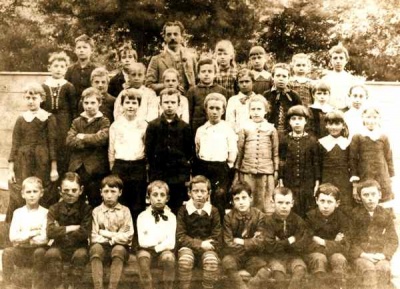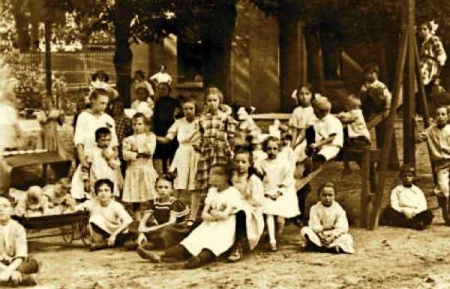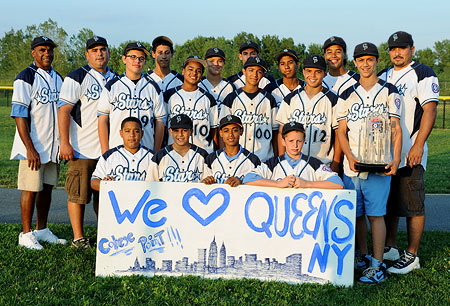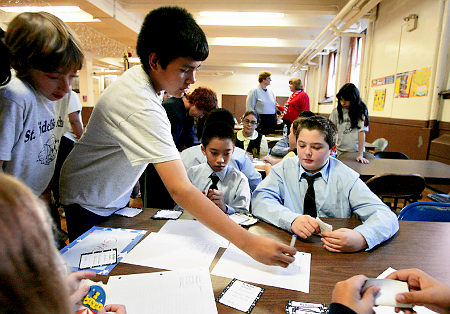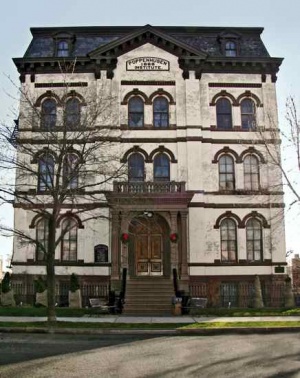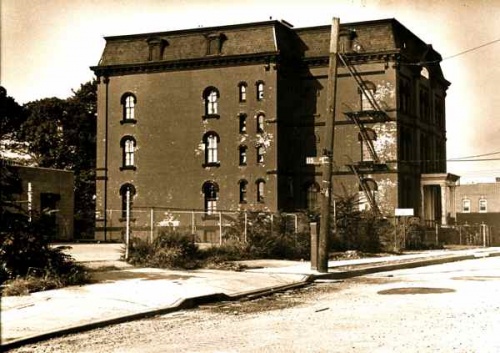Views
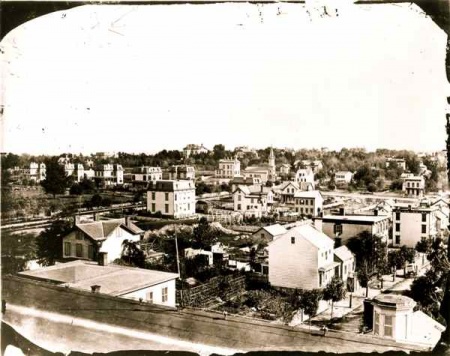
Contents |
Historical Overview

Present day, College Point originated when the Matinecock tribe sold the land, in 1645, to a group of Dutch and English settlers. One of these earlier settlers, William Lawrance became the largest land holder of the area that used to be called Tew's Neck. The decendents of William Lawrance were the only inhabitants of the land until after the American Revolution, when they had to sell a large portion of the land to Eliphalet Stratton to pay back their debts. As the Stratton's moved into the home they built on their newly aquired land in 1789, the name of the town changed from Lawrence Neck to Strattonport.[3][4]
In 1838, the Reverend William Augustus Muhlenberg, rector of St. George Episcopal Church in Flushing, founded St. Paul’s College on the site of what is now MacNeil Park. This institution lasted less than a decade, but its name became permanently stamped on the entire community of College Point.[5][6]
In the 1850’s, a German immigrant named Conrad Poppenhusen arrived in College Point and changed it forever. The process known as Vulcanization – the process of treating rubber to give it strength and durability – had recently been discovered, and Poppenhusen saw the economic potential. He was able to use hard rubber to replace whalebone (which was the standard at the time) in everything from ladies corsets to scientific equipment. Poppenhusen built a large factory in the area, employing hundreds of immigrant workers and constructed a model community with schools, water and sewage systems, a branch of the Long Island Railroad, and a cobblestone road to Flushing. The very first free Kindergarten in the United States was established by Conrad Poppenhusen at the Poppenhusen Institute, an edifice he created for the education and enlightenment of his workers. The original core collection of what would become the Library was housed within the Poppenhusen Institute.[7][8]
In the year 1904, when Theodore Roosevelt was President of the United States, the Poppenhusen Branch of the Queens Borough Public Library opened its doors to an enthusiastic community. It was constructed of brick and stone in the Classical Revival style by Heins and LaFarge, and was one of the original Carnegie buildings in the Queens system. Only six of these remain in the borough. While the building itself was financed by railroad magnate Andrew Carnegie, the land was donated by the citizens of the College Point community. The core of the original collection was donated by Conrad Poppenhusen and family, comprised of the books that had originally been housed at the Poppenhusen Institute. In addition to achieving Landmark status, the branch has gone through a complete interior renovation which preserves its stately appearance while enhancing library service with modern technology. The library celebrated its official Centennial in October of 2004. The Poppenhusen branch proudly bears the name of the historic benefactor of College Point.[9][10]
While College Point had become known during the latter part of the 19th Century as the hard rubber capital of the Northeast, plastics would eventually take over and replace hard rubber as a component in the manufacture of small consumer goods. The rubber company Mr. Poppenhusen had established at College Point moved to New Jersey in the 1930’s, and the last of the College Point rubber factories closed in the 1970’s. College Point is still home to a number of small businesses and factories, and its community remains vital and involved, solidified by long-time residents and merchants, and revitalized by new immigrant families. College Point, with its many changes over time, still maintains a waterside, small-town feel. [11][12][13]
Significant Changes
Before the nineteen hundreds, it was a sleepy, rural town with little bustle. Yet, by the mid nineteen hundreds, as immigration and technology both grew, the area became a more industrial, suburban neighborhood. Although it was primarily dominated by German immigrants, and is now mostly made up of a white population, there has been an increase in Hispanic residency in the area followed by a smaller number of Asian residents. This change occurred in the late 1980s and early 1990's and is continuing to this day.[15]
'College Point has not always had so heavy an industrial flavor. At one time it contained beer gardens, picnic areas, dance pavilions, beaches and hotels for those who came by train and ferry to enjoy its waterfront ambience. It was like the Hamptons, said Ms. Brustmann of the Poppenhusen Institute.' [16]
The Neighborhood Now
Primarily white, working class citizens. A growing population of Hispanic residents of 24% compared to the white residents of 65%. Now, with a burst of new residential development, the College Point community is struggling to preserve its character as a quiet waterfront location on Flushing Bay and the East River that still can offer small-town living within easy reach of Manhattan, along with relatively inexpensive homes.[17]
"Years ago, we used to say the only reason anyone would know about College Point is if you lived here, worked here, or if you were lost, said Fred J. Mazzarello, president of the College Point Board of Trade, representing local businesses, which he founded in 1969. Now it seems to have become the desired location for a lot of new businesses and residential construction." [18]
Taking a Look at College Point
View Larger Map
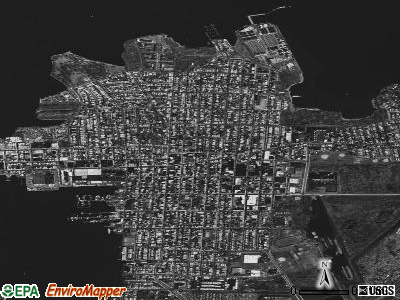
Demographics:
Area: 3.082 square miles
Population: 25,433
Population density: 8,252 people per square mile [20]
For More Population Demographics Visit: College Point Population Demographics
| ZIP Code | 11356 | |
| Population (2000) Density | 20,790 | |
| Demographics | White Black Hispanic Asian Other | 65.0% 6.3% 24.2% 17.9% 1.2% |
| Median income | $42,500 | |
| Source: U.S. Census, Record Information Services | ||
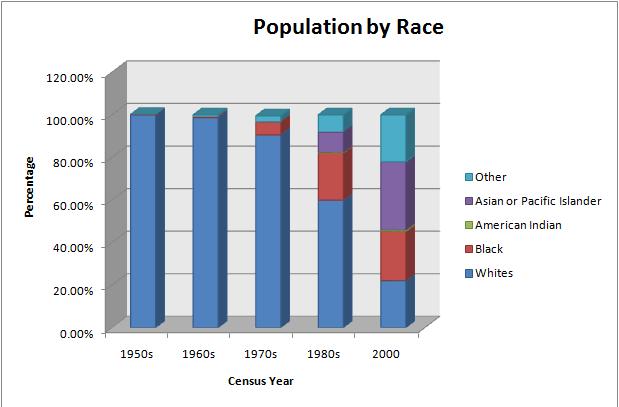
Total Racial Percentages of the Population (according to the 2000 Census):
| Estimated Current Population | 16,638 | |
| Population | 20,444 | |
| White | 14,169 | |
| Black | 251 | |
| Asian | 3,144 | |
| Hispanic | 4,980 | |
| American Indian/ Native of Alaska | 69 | |
| Hawaiian and Pacific Islanders | 1 | |
| Other | 1,914 |
First ancestries reported:
Other groups: 7762 Italian: 3285 Irish: 1990 German: 1593 United States or American: 1127 Polish: 460 Greek: 339 Croatian: 244 Arab:: 197 English: 145 Hungarian: 142 Russian: 130 Austrian: 123 Egyptian: 94 Slovak: 85 Ukrainian: 79 West Indian (excluding Hispanic groups):: 76 Subsaharan African:: 71 Maltese: 70 Scotch-Irish: 61 French (except Basque): 61 Jamaican: 48 Brazilian: 47 Turkish: 47 European: 45 African: 43 Dutch: 43 Albanian: 41 Czechoslovakian: 41 Arab/Arabic: 39 Norwegian: 39 Afghan: 37 Bulgarian: 37 Armenian: 35 British: 35 French Canadian: 29 Swiss: 28 Guyanese: 27 Scottish: 27 Portuguese: 27 Romanian: 26 Other Arab: 21 Haitian: 20 Jordanian: 19 Estonian: 17 Ghanian: 14 Other Subsaharan African: 14 Swedish: 14 Danish: 14 Israeli: 13 Czech: 13 Lithuanian: 12 Lebanese: 12 Palestinian: 12 Canadian: 11 West Indian: 8 Yugoslavian: 6 Pennsylvania German: 5 [24]
Education
Schooling Then:
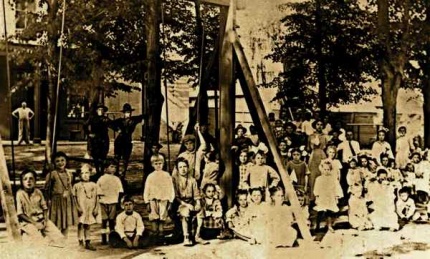
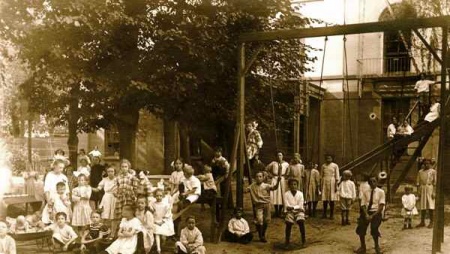
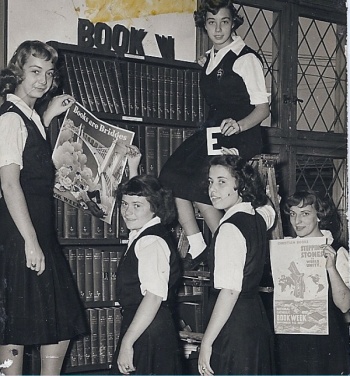
College Point was named after the St. Paul's divinity school, and although the school was short lived, the name of the town lived on.
By the second half of the nineteenth century, College Point had several military schools including: Leseman's, Fuerst's, and Gerlach's academies, as well as Bethlehem and Berachah orphan asylum.
Furthermore, the education for College Point's children ranged from "an ancient village schoolhouse to parochial institutions that served its sizeable Catholic, Lutheran, and Dutch Reformed populations".
[25]
Schooling Now:

College Point has two elementary schools, P.S. 129 and P.S. 29. Children can continue their public school education at either J.H.S. 185 or J.H.S. 194 and then at Flushing High School. Children can attend kindergarten through eighth grade at three parochial high schools: the Catholic St. Fidelis School, St. Paul's Episcopal School, and St. John's Lutheran School. The St. Agnes Academic School is a Roman Catholic high school for girls. [26]
At P.S. 129, (at 128-02 Seventh Avenue), 64.4 percent of fourth grade pupils taking state tests scored at or above grade level in English last year and 83.5 percent in math.

At P.S. 29, (125-10 23rd Avenue), 78.6 percent of fourth graders scored at or above grade level in English, and 83.1 percent in math.
There are approximately 596 students at this school.
There are 85 students in Kindergarten, 71 in Grade 1, 85 in Grade 2, 88 in Grade 3, 96 in Grade 4, 85 in Grade 5, 86 in Grade 6 . Fourth Grade has the highest number of enrolled students. In this school there are 295 male students and 301 female students making the female students exceed the number of male students in this school. The student ethnic body is comprised of 156 white students, 162 asian/pacific islander, 261 hispanic, 17 african american students and 0 native american students.
[28]
Children continue their public school education either at J.H.S. 185 in Flushing or J.H.S. 194 in Whitestone.
From there students generally go on to Flushing High School.
Children can also attend kindergarten through eighth grade in one of three parochial schools:
Catholic St. Fidelis School
St. Paul's Episcopal School
St. John's Lutheran School
Annual tuition at the three schools ranges from $2,700 to $3,300.
The neighborhood also has a private high school, St. Agnes Academic School, a Roman Catholic college-preparatory school for girls at 13-20 124th Street. It offers Grades 9 to 12 for 400 students paying $5,800 annually in tuition. About 98 percent go on to college, said the principal, Sister Joan Martin.
[29]
College Point (zip 11356) public schools spend $7,279 per student. The average school expenditure in the U.S. is $6,058. There are about 20 students per teacher in College Point (zip 11356).
[30]
Educational Demographics:
Private vs. public school enrollment: Students in private schools in grades 1 to 8 (elementary and middle school): 585
Here: 25.9%
New York: 14.0%
Students in private schools in grades 9 to 12 (high school): 195
Here: 19.7%
New York: 13.2%
Students in private undergraduate colleges: 499
Here: 44.8%
New York: 38.2%
Creative Accent
Flushing Airport - Opened in 1927 along the shore of Flushing Bay, the airport had been a busy aviation hub before LaGuardia Airport was built in 1939 about one mile away. It carried the IATA code FLU. In 1977, a Piper Twin Comanche crashed shortly after taking off from the airport. The incident eventually led to the closing of this airport in 1984. The site remains abandoned, although plans have been proposed over the years to convert it into a blimp-port or office park. Given natural deterioration of the hangars and concrete runways, however, it is likely that the site will simply return to being natural wetlands. [33]
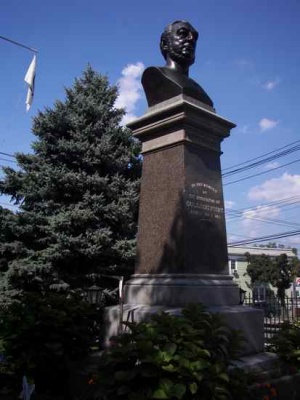
Poppenhusen Institute — Built in 1868 by Conrad Poppenhusen, the founder of College Point. The architecture features a French Second Empire Mansard roof topping off the three Italianate style stories. Originally a town hall, Poppenhusen now provides a variety of low-cost or free educational, cultural and historical classes and activities for the community. Poppenhusen selected College Point in 1854 as the site for a factory making hard rubber products and quickly converted the area's farm fields into a thriving community. He donated land for a school and a church, built houses for his workers and provided vocational training and a free kindergarten at the Poppenhusen Institute. Now a federal and state landmark, the building at 114-04 14th Road is still a thriving center. [34]
Testimonials
Josephine Carson's family came to College Point from Romania in 1929. She was born in College Point 70 years ago and has lived here ever since:
What do you like best about it?
People still keep their houses nice and clean. People are very patriotic. You can see flags flying all over. I like that we're very close to the city; if you want to see a play or a show I can just get on a bus and take the train in.
What would you change if you could?
What I dislike are greedy developers who are building on landfill and taking away our beautiful view of the bridge and the views around the park. It impacts everyone, the traffic, the fees, the services. The town is not equipped to handle all of that.
What's one neighborhood gem?
The Poppenhusen monument on College Point Boulevard and 11th and 12th streets. It's been there forever, and it really is the tribute to the founder of College Point. Poppenuhusen started the rubber company that brought all the people here. Everyone knows about the monument; it's more or less in the center of town. If that were ever defaced or ruined in any way, it'd be a tragedy. [35]
"Nor has the community lost its small town persona. Everyone knows each other, said Carl D. Rosenblum, interim pastor at the First Reformed Church of College Point. I was here two days and everyone greeted me with, 'Hi, Pastor.' "
"The community spirit is also fostered by an annual Memorial Day parade; summer street fairs along College Point Boulevard, the main shopping street; an annual marathon that circles the community; and concerts and other events held at the 29-acre Hermon A. MacNeil Park." [36]
Conclusion
The neighborhood of College Point appears to be its own unique identity, separate from the urban lifestyle of the rest of Queens and New York's other boroughs. Unfortunately, "greedy" developers have been trying to transform this area with high rise apartments encircling the waterfront. This would be taking away the beautiful views that people have of the bridge and of the park. Furthermore, everyone living there will be impacted as traffic will increase, and a possible rise in fees and services. Therefore, I recommend some policy changes to prevent this rather suburban area from becoming yet another highly populated region in New York City. Policy makers should be addressed and should limit the amount of these developments.[37]
When looking at the educational system, there seems to be great schools set up to help every student living in the area to achieve a decent academic achievement. Of course, those who can afford sending their children to one of College Point's private schools, do end up helping their children receive a slightly better quality education that those who's children attend the public schools. Personally, I don't see this to be a problem and, in fact, College Point seems to be doing just fine with the way it's educational system is set up and I wouldn't really recommend a change. IF there were any policies that could be passed to make the neighborhood even better, it should be for the public schools in the region to receive better resources to teach their students.
Reference
- ↑ www.poppenhuseninstitute.org/
- ↑ CollegePoint book cover-www.books.google.com/books?id=7STTzO-huNEC
- ↑ Hecht, Robert A., A History of College Point. Bicentennial Committee of College Point, Inc. 1976.
- ↑ www.qgazette.com/news/2004/0916/Feature_Stories/016.html
- ↑ Book: A History of College Point by Robert A. Hecht
- ↑ www.qgazette.com/news/2004/0916/Feature_Stories/016.html
- ↑ Book: A History of College Point by Robert A. Hecht
- ↑ www.qgazette.com/news/2004/0916/Feature_Stories/016.html
- ↑ Book: A History of College Point by Robert A. Hecht
- ↑ www.qgazette.com/news/2004/0916/Feature_Stories/016.html
- ↑ "Poppenhusen" Queens Library, www.queenslibrary.org/index.aspx?page_nm=CL-Communityinfo&branch_id=P&#clhistory
- ↑ Book: A History of College Point by Robert A. Hecht
- ↑ www.qgazette.com/news/2004/0916/Feature_Stories/016.html
- ↑ www.youtube.com/watch?v=HBD7X2z40rU
- ↑ Queens Library-www.queenslibrary.org/index.aspx?page_nm=CL-Communityinfo&branch_id=P&#clhistory
- ↑ SHAMAN, DIANA,"If You're Thinking of Living In/College Point, Queens; A Sense of Seclusion Close to Manhattan". NY Times. March 2002.
- ↑ NYtimes
- ↑ http://nytimes
- ↑ Map of College Point-www.city-data.com/zips/11356.html
- ↑ www.city-data.com/neighborhood/College-Point-College-Point-NY.html
- ↑ www.bestplaces.net/zip-code/College_Point-New_York-11356.aspx#
- ↑ Race Chart
- ↑ www.zip-codes.com/city/NY-COLLEGE-POINT.asp
- ↑ City-Data
- ↑ Book: College Point By Victor Lederer, Poppenhusen Institute
- ↑ collegepointhomes.com
- ↑ new-york.schooltree.org/public/Public-School-PS-129-Patricia-A-Larkin-060484.html
- ↑ www.schoolfolks.com/school/90533
- ↑ NYtimes
- ↑ Best Places
- ↑ City-Data
- ↑ www.youtube.com/watch?v=pcNTDC86GZ4
- ↑ www.queenstribune.com/anniversary2003/1977.htm
- ↑ nytimes
- ↑ newsday
- ↑ NYtimes
- ↑ A History of College Point by Robert A. Hecht
